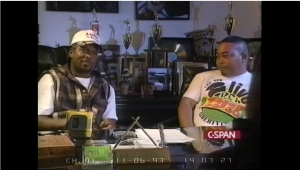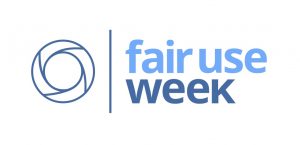|
Getting your Trinity Audio player ready...
|
Fair Use Week is a celebration of the creative possibilities enabled by of one of copyright laws most powerful exceptions.
The fair use exception in copyright law establishes that some uses of copyrighted material are fair to use, therefore not infringing on an author or rights holder’s exclusive rights. In simpler terms, fair use can allow the public to use copyrighted material without requesting permission or violating copyright law — however, it can be tricky, and in order to determine if your use is fair, these four factors are used to determine fair use:
- The purpose and character of the use, including whether the use is commercial or for nonprofit educational purposes
- The nature of the copyrighted work
- The amount and substantiality of the portion used in relation to the copyrighted work as a whole
- The effect of the use upon the potential market for, or value of, the copyrighted work
Determining whether or not a use is ultimately fair depends on a ruling by a judge, and this makes case law extremely important in understanding fair use. Case law, meaning past legal decisions, and the accompanying articles, legal briefs, and interviews, helps us to understand the plights of both the creator and users of a work.
The case Campbell v. Acuff-Rose Music, Inc. illustrates how fair use can support the creation of new art by allowing the incorporation of an existing work that is still protected by copyright. It all began with the rap duo 2 Live Crew making a parody of Roy Orbison’s song “Pretty Woman.” 2 Live Crew had contacted the rights holders of “Pretty Woman,” Acuff-Rose Music, to request permissions for their parody and were denied. Being denied permissions does not automatically make a fair use unfair. 2 Live Crew felt confident and released the song anyway. After an initial trial and an appeal, the Supreme Court stepped in.

Luther Campbell, one half of 2 Live Crew, gave an interview during the November 3, 1993 episode of In the Courts on C-SPAN, just prior to the Supreme Court hearing. In the interview, Campbell plays samples of both songs for comparison. His relating of the situation calls attention to an important part of fair use and copyright law. He postulates that the driver behind the initial copyright infringement suit was about the reputation of Orbison’s “Pretty Woman” and he asserts that this is a first amendment, or free speech, case.
Copyright law was meant to protect authors and encourage new creation. Some rights holders have also looked to it as a way to silence speech and expression they feel is damaging to themselves or their work. The fair use exception in copyright law is one way that copyright law works in harmony with the first amendment by making some uses of copyrighted material, like parody and criticism, protected as long as they can be found to be fair uses.
Case history like Campbell v. Acuff-Rose Music, Inc. establishes examples to measure future fair uses against. During this particular case, the Supreme Court added a new layer of consideration to its evaluation of the first factor of fair use, the purpose and character of the use, and focused on whether a use was transformative. The court found “the more transformative the new work, the less will be the significance of the other three factors.” Whether a use is transformative has since played a significant role in evaluating fair use. As Luther Campbell says in the interview, “We gonna pave the way for everybody else, just like we always do.”
